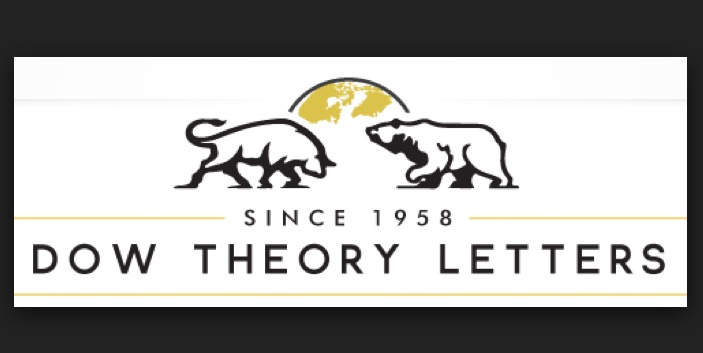
London's FTSE 100 index closed higher on Friday, November 28, 2025, buoyed by a significant resurgence in energy and mining stocks. This positive momentum comes amidst a broader commodity rally that has seen prices for precious and industrial metals extend their record gains, signaling renewed investor confidence in resource-linked assets and a nuanced global economic outlook. The advance underscores the UK market's sensitivity to raw material prices, with heavyweight resource companies playing a pivotal role in driving the benchmark index's performance.
This upward trend reflects a complex interplay of global demand, supply constraints, and shifting monetary policy expectations, particularly from the US Federal Reserve. While the positive close offers a welcome boost to UK equities, it also highlights underlying inflationary pressures and the strategic importance of commodity sectors in the current economic climate.
Detailed Coverage: A Week of Gains Amidst Global Shifts
The positive close on November 28, 2025, capped a week of notable movements for UK shares, with the FTSE 100 demonstrating resilience despite various domestic and international developments. The index climbed 0.3% to close at 9,720.51, contributing to a 1.9% gain for the week. This performance was largely orchestrated by a robust commodity market, which saw silver surge to a record high of $55 per ounce and copper hit new peaks at $11,210.50 per tonne, driven by tightening supply and strong global demand. Gold also reached a two-week high, on track for its fourth consecutive monthly gain.
The week began with the unveiling of the 2025 UK Budget on Wednesday, November 26. Chancellor Rachel Reeves' budget, largely pre-leaked, was met with cautious optimism, with markets reacting positively to the announcement of £22 billion in fiscal headroom. The FTSE 100 gained 0.86% that day, and the pound strengthened against the dollar, while UK bond yields fell. However, some corporate sectors faced headwinds, with hotel and restaurant group Whitbread (LSE: WTB) warning of significantly increased costs due to new business rates, and gambling firms facing higher betting duties.
Thursday, November 27, saw subdued trading volumes due to the US Thanksgiving holiday, as investors continued to digest the budget's implications. By Friday, trading was initially disrupted by a technical outage on the Chicago Mercantile Exchange (CME), temporarily halting futures trading across various asset classes. Despite this early chaos, market sentiment quickly shifted as expectations for a December interest rate cut by the US Federal Reserve solidified, with an estimated 85% chance priced in by market participants. This dovish outlook significantly boosted global equities and precious metals, providing a strong tailwind for London's commodity-heavy index. Energy shares, bolstered by oil prices trading above $65 per barrel following OPEC+ decisions, also added substantial points to the index.
Companies in Focus: Winners and Losers of the Commodity Boom
The commodity rally has created a distinct landscape of winners and losers among UK public companies, with resource-focused firms reaping substantial benefits while others grapple with rising input costs.
The Winners: Energy and mining companies have been the primary beneficiaries. Major players like Shell plc (LSE: SHEL) and BP plc (LSE: BP) have seen their shares climb, adding significant points to the FTSE 100. Their upstream (exploration and production) segments directly profit from elevated oil and gas prices. Similarly, mining giants such as Fresnillo plc (LSE: FRES), Endeavour Mining plc (LSE: EDV), Antofagasta plc (LSE: ANTO), Rio Tinto plc (LSE: RIO), Glencore plc (LSE: GLEN), and Anglo American plc (LSE: AAL) have witnessed strong gains. Fresnillo and Antofagasta, for instance, saw their shares rise by 50.00p and 68.00p respectively on November 28. These companies benefit directly from surging prices of gold, silver, copper, and iron ore, leading to expanded revenue and profit margins. Their future outlook appears robust, with expectations of increased earnings and potential for higher shareholder returns, assuming commodity prices remain elevated. Weir Group plc (LSE: WEIR) also saw its shares climb after an 'outperform' rating from Exane BNP, reflecting positive sentiment in industrials linked to resource sectors.
The Losers: Conversely, sectors heavily reliant on commodities as input materials or those facing increased operational costs due to rising energy prices are feeling the squeeze. Airlines and transportation companies, for example, face significantly higher fuel expenses. International Consolidated Airlines Group S.A. (LSE: IAG), the parent company of British Airways, and easyJet plc (LSE: EZJ) (though easyJet was a top gainer on the day due to a Bernstein upgrade, the underlying cost pressure from fuel remains a long-term challenge) would typically see their profitability impacted by sustained high crude oil prices. Manufacturing and industrial companies that use metals or chemicals as primary inputs also face higher raw material costs. Furthermore, consumer discretionary and retail companies could be indirectly affected as higher energy costs for transportation and utilities squeeze consumer disposable income. Whitbread plc (LSE: WTB) shares sank 6.2% on November 28, exacerbated by a double downgrade from Bernstein, following its budget-related cost warnings, highlighting the pressure on some consumer-facing businesses. Burberry Group plc (LSE: BRBY) also fell 2.4% after a JPMorgan rating cut, suggesting luxury retail might face headwinds from broader economic sentiment.
Wider Significance: A Reshaping Economic Landscape
The commodity-driven rally and its impact on UK shares signify broader, interconnected trends reshaping the global economic landscape. This "everything rally," particularly notable in 2025, where gold, equities, and real estate have simultaneously risen, is a historically unusual anomaly largely attributed to excess global liquidity.
Broader Industry Trends: The sustained demand for raw materials is fueled by several factors. The global energy transition is a significant driver, with the shift towards clean energy and electrification creating robust, long-term demand for critical minerals like copper, lithium, and cobalt—essential for electric vehicles and renewable energy infrastructure. Geopolitical risks also contribute, with ongoing tensions increasing demand for safe-haven assets like gold, which has seen central banks consistently increase their reserves. While European manufacturing data remains weak, equity markets appear to be pricing in an eventual recovery, suggesting a forward-looking optimism.
Ripple Effects: The rally creates a dynamic environment for supply chains. While resource extractors thrive, industries reliant on these inputs must adapt to fluctuating costs. Companies with efficient supply chains or strong pricing power may gain an edge, while others could face margin compression. Internationally, China's economic health remains a crucial "swing factor," with its stimulus measures potentially boosting demand for mined products. Improved sentiment around UK assets, bolstered by such rallies, could also attract overseas investors and potentially revive IPO activity in London.
Regulatory and Policy Implications: Governments are responding strategically. The UK's Critical Minerals Strategy, aiming for increased domestic production and recycling by 2035, underscores the national security and economic importance of these materials. The Financial Conduct Authority (FCA) has also reformed commodity derivatives regulation to enhance market transparency and reduce systemic risk. Furthermore, commodity price increases contribute to inflation, prompting government policies (including taxation and trade agreements) to manage broader inflationary pressures. The UK Budget itself, with its fiscal headroom, aimed to provide some stability amidst these economic currents.
Historical Precedents: While the current "everything rally" is unique, history offers comparisons. The 2021-22 commodity boom, for instance, led to exceptional earnings for energy and mining companies, although market sentiment was cautious about its sustainability. Geopolitical shocks, such as Russia's invasion of Ukraine in 2022, have historically triggered sharp commodity price movements. The current outperformance of gold against tech stocks might also signal a broader investor rotation, echoing past shifts during periods of monetary policy uncertainty.
What Comes Next: Navigating a Volatile Future
The UK market stands at a crucial juncture, with the recent commodity-driven rally presenting both opportunities and challenges for the short and long term.
Short-Term Possibilities: In the immediate future, commodity sectors, particularly energy and mining, are likely to maintain momentum if global demand remains robust and inflationary pressures persist. However, the Bank of England's cautious stance on interest rates, aimed at curbing inflation, could create headwinds for broader economic growth. While the FTSE 100 might be lifted by its commodity heavyweights, other sectors sensitive to consumer spending or fiscal tightening could face a mixed performance. Global factors, including US Federal Reserve policy and ongoing trade tensions, will continue to influence sterling and overall market stability.
Long-Term Possibilities: The long-term outlook for commodities is supported by structural trends like the green energy transition and the AI boom, which will sustain demand for critical industrial metals. This bodes well for the UK's resource sectors. However, the UK economy faces projections of modest real GDP growth and slower growth in real household disposable income. This highlights the need for market diversification beyond commodities to ensure sustained resilience. Fiscal policy, including government debt management and tax measures, will also be critical in shaping the long-term economic environment.
Strategic Pivots and Emerging Opportunities: Investors may consider strategic sector rotation, potentially shifting towards defensive and consumer sectors for stability, especially if geopolitical optimism or inflation concerns persist. Commodities themselves can serve as an effective inflation hedge. There are also emerging opportunities in technology and AI, with UK retail investors reportedly gravitating towards these themes. Strengthening supply chain resilience, particularly for critical minerals, is a strategic imperative for the UK, fostering partnerships to secure essential resources. The global emerging market rally, driven by technology and commodities, could also offer diversification opportunities for UK investors.
Potential Scenarios: A bullish scenario could see easing inflation and eventual interest rate cuts stimulating economic growth, further supported by a sustained commodity rally driven by structural demand from green energy and AI. A bearish scenario might involve persistent inflation, external shocks, and fiscal tightening, potentially leading to a mild recession and prolonged subdued growth. A stagnation or mixed outcome is also plausible, where commodity sectors remain strong but other parts of the economy struggle with moderate growth and consumer caution, making the market highly sensitive to global events.
Wrap-up: Assessing the Market Moving Forward
The positive close of UK shares, propelled by a vigorous commodity rally and strong performances from energy and mining stocks on November 28, 2025, is a significant event with far-reaching implications. It underscores the continued importance of the resource sector to the UK economy and its benchmark index.
Key Takeaways: The market's resilience, despite initial disruptions and domestic policy shifts, highlights the powerful influence of global commodity cycles and central bank monetary policy expectations. While resource companies are clear winners, sectors reliant on these inputs face increased cost pressures. The broader "everything rally" suggests a unique economic environment driven by liquidity and structural shifts.
Market Moving Forward: Investors should anticipate continued volatility, with market movements heavily influenced by inflation data, central bank decisions (particularly from the Bank of England and the US Federal Reserve), and geopolitical developments. The long-term demand for critical minerals, driven by the green energy transition and AI, provides a structural tailwind for mining companies, but the sustainability of broader commodity prices remains a key watchpoint.
Final Thoughts: This event serves as a reminder of the interconnectedness of global markets and the profound impact of raw material prices. While the immediate outlook for commodity-linked shares is positive, the wider economy faces challenges related to inflation, growth, and fiscal policy.
What Investors Should Watch For: In the coming months, investors should closely monitor commodity price trends, particularly for oil, gas, and industrial metals. The Bank of England's stance on interest rates and any further details on the UK's Critical Minerals Strategy will also be crucial. Furthermore, global economic data, especially from China and the US, will continue to provide signals for the direction of the commodity market and, by extension, the UK's resource-heavy equity index. Strategic diversification and a keen eye on evolving geopolitical landscapes will be paramount for navigating the market ahead.
This content is intended for informational purposes only and is not financial advice






